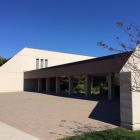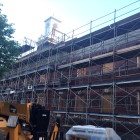News
School Board Grappling With ‘Risky’ Cut To Health Insurance Reserve Fund
|
Just weeks after the town slashed the New Canaan Board of Education’s health insurance reserve account by $1.1 million for the fiscal 2015-2016 year, members of the board are now discussing how they would deal with a potential worst case scenario in which claims exceed the amount budgeted and eat into the reserves. During Monday’s Board of Education meeting at New Canaan High School, Dionna Carlson, who heads up the board’s educational resources sub-committee, said, “Through our work on the health insurance account we have identified a problem with our health insurance reserve as it relates to the health insurance reserve policy that was put into place in April 2014.”
That policy, crafted in cooperation with the Board of Selectmen, calls for the board to maintain 60% of the approximately $3 million health insurance reserve, known as the stop loss health corridor, as part of its budget, while the town maintains the other 40% in a special reserve on the town’s books. (To save money, the Town of New Canaan self insures as opposed to using full insurance.)
On top of this, the town maintains a special “incurred but not reported” (IBNR) reserve account, of about $1 million, that is used to cover claims that occurred in the fiscal year but which are not processed until after the fiscal year has ended. Members of the Board of Education and the school administration feel that the recent deep cut to the board’s reserve account puts the board at risk of defaulting on claims in the rare event that a high volume of claims draw down the health insurance budget and eat into the reserves. The town’s rationale for making the cut was basically that the board’s health insurance reserve fund is routinely overfunded at the end of each fiscal year.




